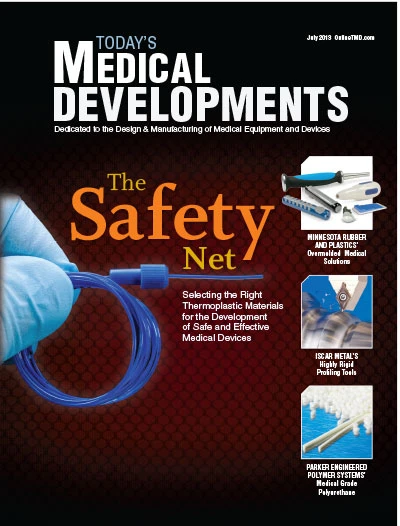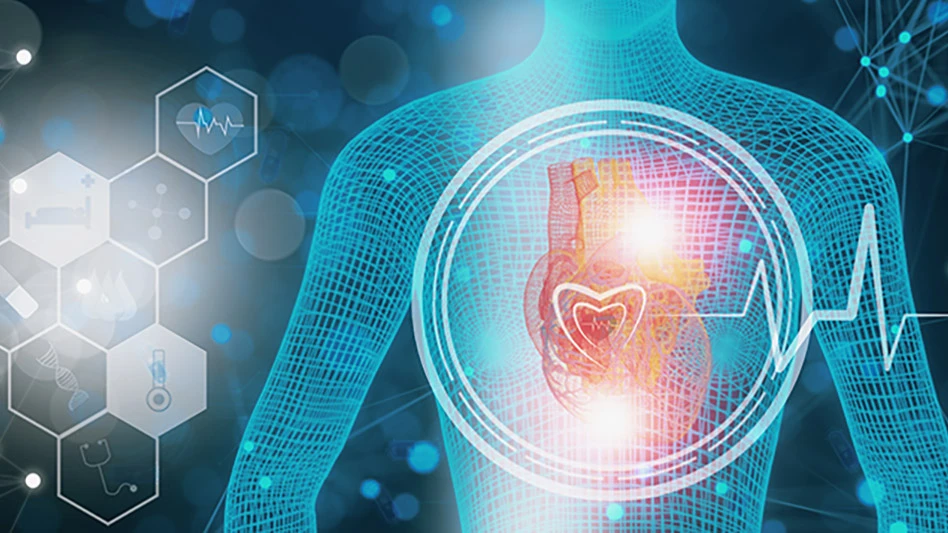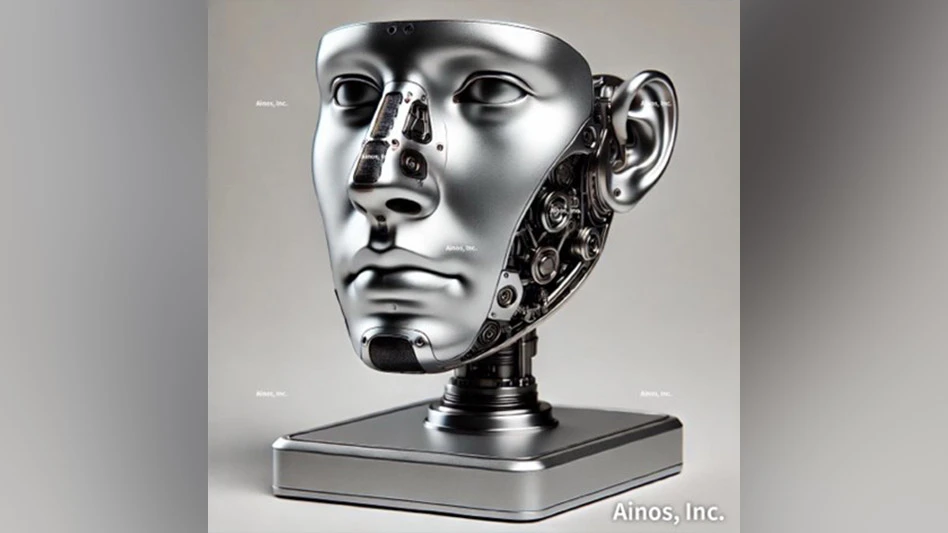Starting from a simple idea, technology available from WiTricity Corp. enables the transfer of electricity without plugs or power cords – something truly wireless – while being safe, efficient, and working over a significant distance. Already finding use in transportation, consumer electronics, defense, and government, the technology’s impact in the medical industry is staged to take implantable devices to a completely new level.
When I reached out to David Schatz, vice president of sales and business development at WiTricity, with a list of questions via email, he offered a deeper look into the product’s development, technology, and impact on medical advancements.
TMD: When did WiTricity begin?
Schatz: WiTricity Corp. was founded in 2007 to commercialize an exciting new technology for wireless electricity invented at the Massachusetts Institute of Technology (MIT). A team of physicists, led by Professor Marin Soljacic, developed the theoretical basis for this novel method for wireless electric power transfer in the early 2000’s, and validated its theories experimentally in 2007. Since the inception of the company, there has been strong market interest in applying this technology in the medical device field. In 2011, WiTricity and Thoratec Corp., the leader in mechanical circulatory support, partnered in a development and IP licensing agreement. Thoratec’s goal is to develop a fully implanted Left Ventricular Assist Device (LVAD), using WiTricity technology to eliminate the need for permanent drive lines that today penetrate the skin to connect the pump to external power sources.

TMD: Were you working on the concept of wireless electricity for distance or did it come out of other research?
Schatz: The intent of the original MIT research was, in fact, to explore ways to transfer energy wirelessly over distance. Professor Marin Soljacic, who led the initial research, was inspired by an everyday problem: how to charge his mobile phone without plugging it in. It occurred to him: “There is electricity wired all through this house, all through my office – everywhere. This phone should take care of its own charging!” But to make this possible, he would have to find a way to transfer power from the existing wired infrastructure to the cell phone – without wires. Soljacic started thinking of practical means that could make this dream a reality. This led to the initial theoretical work and subsequent experiments in highly resonant wireless power transfer.
TMD: How does the WiTricity technology work in transferring electric energy/power over distances?
Schatz: WiTricity’s patented technology enables safe, high-efficiency wireless energy transfer over distance using a method known as highly resonant wireless power transfer. By designing the system to resonate sharply at a specific frequency, energy can be transferred efficiently over distance. Highly resonant wireless power transfer enables much greater distance between the source and capture devices and much greater energy efficiency, as compared to traditional magnetic induction. This is of particular importance with devices like an LVAD which require a substantial level of power to operate. Prior attempts by others in the field to utilize traditional magnetic induction to power an LVAD through the skin were unsuccessful, due to excessive tissue heating resulting from inefficient energy transfer. With WiTricity technology, the power capture device can be implanted deeply within the body cavity, several centimeters from the skin. Likewise, the power source can be several centimeters away from the skin surface. This degree of physical separation, while still maintaining high efficiency, is possible due to the patented highly resonant electro-magnetic system design.

TMD: How does the technology used for WiTricity compare to Magnetic Induction, Radiative, or Magnetic Resonance Imaging?
Schatz:
- Magnetic Induction: Magnetic induction was discovered in 1831 by Michael Faraday. It requires precise alignment between the source and capture device, and allows for minimal separation between devices. WiTricity’s technology is designed to charge or power devices over distances that may be several times larger than the devices themselves. Whereas devices that utilize magnetic induction must be accurately aligned and often are placed in a precision charging cradle, WiTricity’s highly resonant wireless power systems allow users to charge over distance with a great degree of positioning freedom.
- Radiative Power Transfer: Radiated power often refers to methods for wireless energy transfer using RF harvesting, or directed microwave or laser beams of energy. RF harvesting techniques are capable of capturing just a tiny amount of power, far less than what is needed to power a medical device. Directed energy beams require an uninterrupted line of sight to operate, and are not safe or practical for most applications. WiTricity’s technology for power transfer is non-radiative, as it operates in the magnetic near field. It does not require a clear line of sight between the power source and capture devices and it is safe for use in a typical home, hospital, office, or industrial environments.
- Magnetic Resonance Imaging: People might think that WiTricity’s highly resonant wireless power transfer technology is similar to magnetic resonance imaging (MRI) technology; however, this similarity is in name only. The resonance in “MRI” refers to the resonance of atomic structures, and use of magnetism to manipulate water molecules as a basis for diagnostic imaging of soft tissue in the human body. Resonance in WiTricity technology refers to an electromagnetic property of our power transfer technology. It should also be noted that the magnetic fields used in an MRI system are a million times stronger than those used in a WiTricity system.
TMD: Does the product function without the use of batteries?
Schatz: WiTricity technology may not eliminate batteries in medical devices, however, it eliminates the need for repeated surgeries to replace primary batteries, such as those in pacemakers and implanted defibrillators. For devices like the LVAD, which require a great deal of power to operate, WiTricity technology can recharge batteries that are themselves implanted in the body, and it eliminates the need for drive lines that penetrate the skin to deliver power to the pump. Once devices like LVADs are fully implantable and no longer have drivelines penetrating the skin, the on-going healthcare costs and patient mortality associated with driveline wound infections will be eliminated.

TMD: What are all the components that make up the WiTricity device?
Schatz: A WiTricity highly resonant wireless power transfer system is comprised of the following components:
- There is a wireless power source, which generates an oscillating magnetic field in the region around it. The source can get its electrical energy from a battery, or by being plugged into an outlet or another electrical device.
- One or more wireless power capture devices. Each such device can capture energy from the magnetic field generated by the source, and convert it to electrical power that can be used to power a device or charge a battery. More than one device can capture energy from a single source at the same time.
- In some cases, one or more “resonant repeaters” are used to extend the distance range over which the magnetic field can travel, by enabling energy to hop over distance.
- For medical devices that are implanted in the body, the wireless power source is placed outside of the body, and the power capture device is integrated with the implanted medical device. A resonant repeater may be used outside the body to extend the distance range over which the system operates.
TMD: What is the size of the device?
Schatz: The size and form factor of WiTricity’s highly resonant wireless power transfer systems can vary depending on the power required by the medical implant and the distance over which it is expected to be charged. WiTricity has designed systems that are quite small, while at the same time capable of delivering a significant amount of power.
TMD: What materials go into the various components in the system?
Schatz: WiTricity devices use commonly available electronic components and materials, similar to those used for other implanted electronic medical devices. Just as our technology can enable the transfer of energy over distance through the skin, it can also enable power transfer through a number of medical-grade enclosures. As such, our systems can be encapsulated in material suitable for direct implantation in the body to ensure biocompatibility.
TMD: What are features/benefits?
Schatz: WiTricity’s technology can make devices more convenient and safe to use by eliminating the need for drive lines or surgical replacement of primary batteries. Other types of implantable pumps and therapies that require substantial power to operate, measured in watts or tens of watts to operate, can become practical – as they will no longer require drive lines that penetrate the skin. Lower power devices such as implantable cardioverter defibrillators (ICDs), cardiac resynchronization therapy devices (CRTs), and conventional cardiac pacemakers today depend on relatively large primary (non-rechargeable) batteries, which must be surgically replaced every few years. Using WiTricity technology to recharge such devices will eliminate the need for surgical replacement of primary batteries. One day, a total artificial heart may be powered with implanted batteries that are re-charged using WiTricity technology.
Neurostimulators are another growing implant therapy where we have found industry interest in the technology. Devices on the market today utilize traditional magnetic inductive transcutaneous energy transfer system (TETS), and as a result require frequent charging at very low power levels, using coils that must be strapped to the body to hold them in precise alignment to the implanted coil. Highly resonant wireless power transfer could enable a much more comfortable charging experience for the patient – perhaps as simple as sitting in a chair or lying on a bed with a charging pad.
TMD: Is there a limit to the distance it can travel and or objects that can impede its functioning?
Schatz: Our technology is designed for applications requiring power transfer over distances ranging from 1cm or less to several meters. The actual operating range for a given application is determined by many factors, including is the size of the devices, the materials environment, and the amount of power to be transferred.
TMD: Is this technology safe, and if so, how has that been proven?
Schatz: Yes, our technology is very safe and can comply with applicable safety standards and regulations. Our engineers utilize specialized computer models and laboratory testing to ensure that products based on WiTricity technology operate within regulatory limits, such as those established by the FCC, ICNIRP, and IEEE.
 TMD: How scalable is this technology for use across a broad range of medical devices/durable equipment?
TMD: How scalable is this technology for use across a broad range of medical devices/durable equipment?
Schatz: WiTricity has developed systems capable of highly resonant wireless power transfer of milliwatts to kilowatts. Since its founding, WiTricity has developed systems for applications ranging from the charging of electric vehicles to recharging mobile phones and Bluetooth headsets. WiTricity technology can also be applied to other types of medical devices that need both mobility and a streamlined charging experience. Handheld medical instruments and power tools can be equipped with wireless charging to eliminate the sterilization challenges associated with removable batteries and to hermetically seal the device by removing charging ports. Medical carts carrying computers and other diagnostic instruments can be recharged and powered wirelessly from sources embedded in the floor throughout a hospital environment. Eliminating cables and batteries by using highly resonant wireless power transfer can provide huge productivity and safety improvements for a modern healthcare provider.
TMD: How do you see it working in the medical market?
Schatz: Highly resonant wireless power transfer addresses the following challenges faced by designers:
- Delivering substantial levels of power that can be measured in watts, or tens of watts – versus the milliwatts delivered by traditional inductive TETS designs;
- Eliminating the need for permanent percutaneous (through the skin) power leads which are known to be a source of infection and which are extremely invasive to the patient’s lifestyle;
- Minimizing tissue heating through high efficiency energy transfer and by keeping the external devices as far away from the skin so they do not conduct heat directly onto the skin; and
- Maximizing patient comfort by enabling charging over distance, using furniture and body worn garments as part of the charging system, to make the charging process as natural as possible.
TMD: Any closing thoughts?
Schatz: WiTricity aims to create a better, more efficient and reliably connected world through our revolutionary highly resonant wireless power transfer technology, which can be used throughout a variety of industries. We are untethering the world from unnecessary wires and reducing its reliance on environmentally harmful disposable batteries, and ultimately ushering in a world with wireless power infrastructure so ubiquitous that you will never have to think about plugging in again. We are particularly excited to apply our technology in the field of medical devices, to improve the lifespan and quality of life for patients around the world.
WiTricity Corp.
Watertown, Mass.
www.witricity.com

Explore the July 2013 Issue
Check out more from this issue and find your next story to read.
Latest from Today's Medical Developments
- Americhem’s EcoLube MD PFAS-free internally lubricated compounds
- German robotics and automation in a downturn
- Blueshift’s AeroZero
- November USMTO grow from October
- Platinum Tooling’s custom and special tooling
- Top 5 global robotics trends 2025
- Accumold’s micro molding innovations
- Methods Machine Tools, Multiaxis, announce AI solution investment





